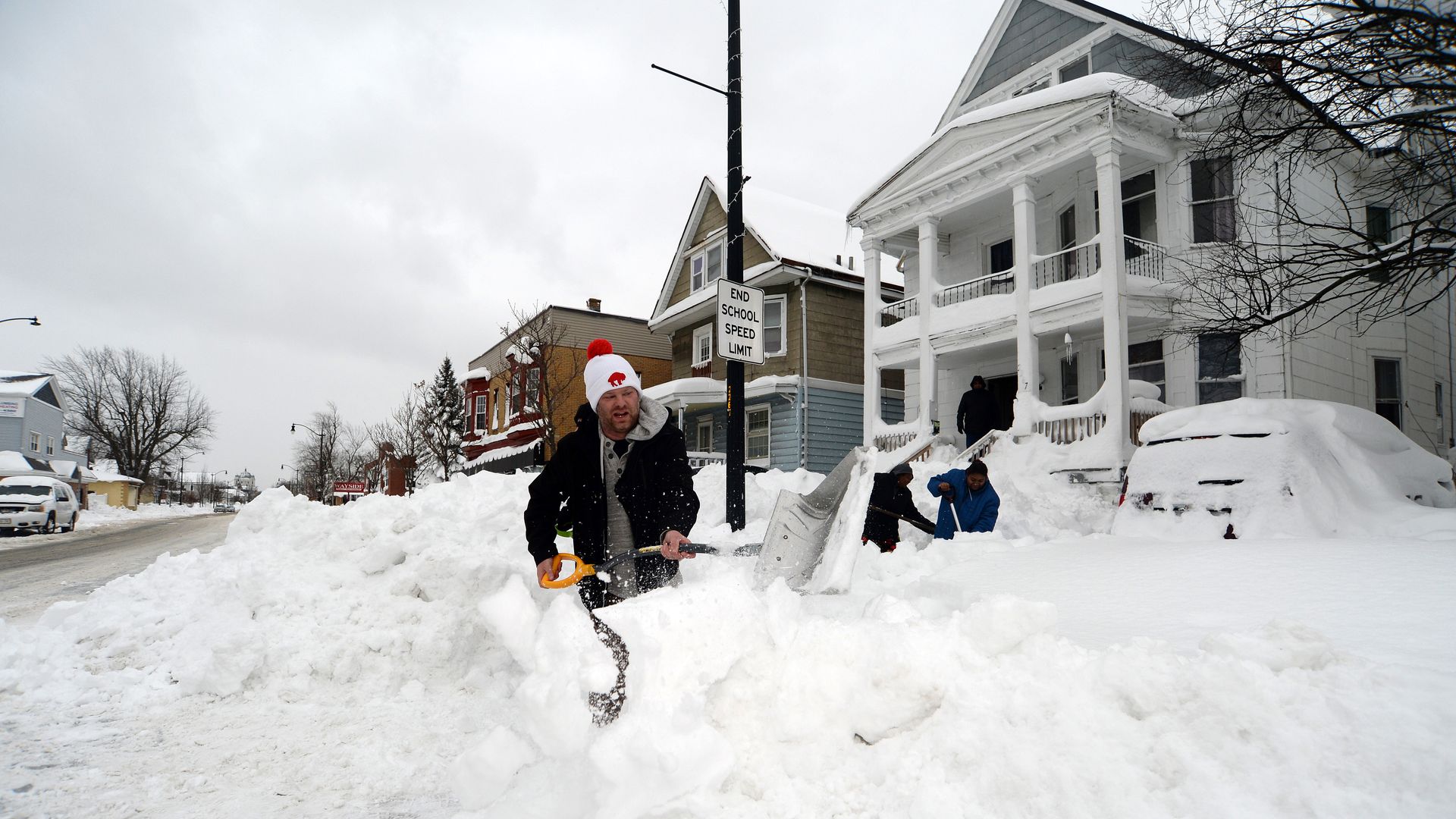
Luke Bennett helps to clear heavy snow for his neighbors along South Park Avenue on Dec. 27 in Buffalo, New York. Photo: John Normile/Getty Images
The death toll from the Buffalo blizzard over Christmas weekend rose to 31 Tuesday, according to numbers from Erie County’s chief executive.
Why it matters: The toll makes this the deadliest lake effect snowstorm on record and the most lethal blizzard in Buffalo since at least 1950. It calls into question how a city so used to snow could be endangered to such an extent.
By the numbers: The storm brought more than 37 continuous hours of blizzard conditions to Buffalo.
- The National Weather Service defines such conditions as having winds of at least 35 mph and visibility of a quarter-mile or less. (True blizzard conditions are not declared until they last for at least three straight hours.)
- During this storm, winds gusted to 71 mph at the Buffalo International Airport, and visibility was frequently reduced to zero — meaning true whiteout conditions were taking place. It can be easy to get lost during such conditions, even steps away from one’s home.
- Of the deaths, Erie County chief executive Mark Poloncarz said one was due to the delay of EMS services in the storm, 17 fatalities occurred outside, three people had cardiac events while shoveling snow, seven others died from lack of heat and three were found in a vehicle.
Between the lines: While the forecast for Buffalo was dire, given where the city was positioned in relation to the bomb cyclone forming across the Midwest and how the storm would interact with the waters of Lake Erie, questions are being raised about how well officials prepared for the storm.
- For example, on Thursday evening Erie County issued a travel advisory to go into effect at 7 am Friday ET, but the travel ban did not go into effect until 9.30 the next morning — as the blizzard was already under way.
- Residents had urged the County to declare a ban earlier — warning that the lack of one encouraged employers to stay open, including retailers eager for one more shopping day before the holiday, the Washington Post reported.
- The NWS blizzard warning issued at 6.25pm on Dec. 23, the evening before the onslaught began, included unusually strong wording, stating: “Travel will be impossible,” “Travel is strongly discouraged,” and noting the likelihood of “life-threatening conditions.”
- Other Weather Service communications warned of a “once-in-a-generation” event for the city and nearby region.
What they’re saying: “The travel ban went went into effect when it did in order to allow third-shift workers from Thursday night as much time as possible to return home before the storm hit,” said Peter Anderson, a spokesperson for Poloncarz, in an emailed statement on Wednesday evening.
- “Also of note is that all government offices, school districts, and many employers heard these warnings and closed for the day, which kept vehicles off the roads.”
The intrigue: In many extreme weather scenarios, a population’s lack of experience with a disaster of a particular magnitude comes into play.
- In this case, Buffalo residents may have been desensitized to snowstorm warnings given the region’s long history with such hazards.
- Even the National Weather Service, which successfully warned of the impending disaster, was seriously affected, as additional forecasters could not make it to the local forecast office at the airport, leaving one 9-person crew on duty from Friday through Sunday.
More from Axios:
- Deadly “once-in-a-lifetime storm” pummels Buffalo
- Biden approves New York emergency declaration over “blizzard of the century”
- Sprawling winter storm continues record-breaking march across the U.S.
Editor’s note: This article has been updated with comment from Peter Anderson, a spokesperson for Erie County chief executive Mark Poloncarz.







